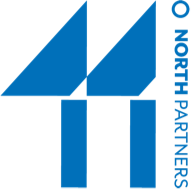Underlying all of the accolades and stories about this bigger-than-life man was a single, common theme: John McCain lived by a set of principles that guided and governed his words and deeds. In tribute after tribute, we heard about the core values, developed through his upbringing, education and experience, that defined McCain’s character and underpinned his life’s purpose – his selfless service to and sacrifice for his country, his tireless fight for freedom, truth and human dignity, and his numerous acts of valor, respect, humility, and forgiveness. Every story revealed and demonstrated the character of this extraordinary, yet ordinary, man.
The story of John McCain helps us understand the power of authentic values, of defining what we stand for and recognizing the implications of this commitment – whether for an individual or an organization. In July 2002, the Harvard Business Review published, Make Your Values Mean Something, an article that continues to have relevance today – perhaps even more so. In it, the author argues: “…coming up with strong values — and sticking to them — requires real guts. Indeed, an organization considering a values initiative must first come to terms with the fact that, when properly practiced, values inflict pain. They make some employees feel like outcasts. They limit an organization’s strategic and operational freedom and constrain the behavior of its people. They leave executives open to heavy criticism for even minor violations. And they demand constant vigilance.” Throughout history, those who have been most successful — individuals, organizations, or institutions — have clearly defined and consistently reinforced their values. They have been steadfast and courageous and willing to incur pain to uphold their core principles.
Earlier this week, in a column in Fortune, Chip Bergh, the CEO of Levi Strauss & Co took a stand on gun violence, citing company values as the basis for his actions.
“As president and CEO of a values-driven company that’s known the world over as a pioneer of the American West and one of the great symbols of American freedom, I take the responsibility of speaking up on the important issues of our day very seriously. We can’t take on every issue. But as business leaders with power in the public and political arenas, we simply cannot stand by silently when it comes to the issues that threaten the very fabric of the communities where we live and work. While taking a stand can be unpopular with some, doing nothing is no longer an option.
… As a company, we have never been afraid to take an unpopular stand to support a greater good. We integrated our factories in the American South years before the Civil Rights Act was passed. We offered benefits to same-sex partners in the 1990s, long before most companies did. We pulled our financial support for the Boy Scouts of America when it banned gay troop leaders.
While each one of these stands may have been controversial at the time, history proved the company right in the long run. And I’m convinced that while some will disagree with our stand to end gun violence, history will prove this position right too.”
This is the lesson and legacy of John McCain. Real values are not empty words; they are integral to every decision we make, every message we deliver, every interaction we have with family, friends, colleagues, clients and key constituents.
The media has reported that McCain orchestrated every detail of his own funeral, from the events of the week, to the memorial service music, to the speakers who delivered eulogies. He clearly had one more message he wanted us all to consider. In doing so — even in death, McCain is leading by example, challenging all of us to ask, and answer, these important questions:
- Who do we want to be?
- What are our fundamental values?
- How vigilant are we willing to be to preserve and protect them?
